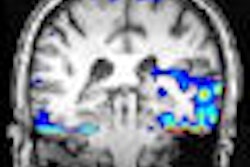Monday, November 30 | 3:40 p.m.-3:50 p.m. | SSE11-05 | Room E353B
While diffusion-weighted imaging (DWI) might be useful to depict extravesical lesions from bladder cancer, Japanese researchers say other imaging scans are required to eliminate false positives.In the study, researchers at Nagoya City University Hospital used DWI to determine the clinical stage in patients with bladder cancer and to evaluate the effect of treatment and recurrence and/or metastases.
"Because DWI reflects the degree of water molecular diffusion and restriction to water diffusion in biological tissues, the tissues with abundant cellularity, such as malignant tumors, would show the higher signal intensity than those of surrounding structures," said co-author Dr. Mitsuru Takeuchi.
Between August 2006 and May 2008, 136 consecutive bladder cancer patients underwent axial and sagittal DWI and T2-weighted imaging on a 1.5-tesla MRI system. Two radiologists evaluated MR images of the urethra, prostate, lower ureters, pelvic lymph nodes, peritoneum, and pelvic bone.
Excluding nodal metastases, the study detected 36 extravesical lesions in 27 patients. Using DWI, 56 lesions with abnormal intensity were found in 50 patients. There was one false negative and 21 false positives. There was no significant difference in the apparent diffusion coefficient (ADC) values between metastatic and benign lymph nodes.
Takeuchi said the information from DWI is very important to help determine the course of treatment for a patient with bladder cancer.
"If a tumor were found at the ureter or urethra using this technique, a nephro-uretero-cystectomy or cysto-prostatectomy might be the choice, respectively," Takeuchi said. "If a tumor would be suspected within the prostate, a prostatic biopsy and resulting cysto-prostatectomy might be indicated."
The researchers found that DWI proved most useful to assess the extent of urothelial cancer.



.fFmgij6Hin.png?auto=compress%2Cformat&fit=crop&h=100&q=70&w=100)




.fFmgij6Hin.png?auto=compress%2Cformat&fit=crop&h=167&q=70&w=250)











